SQL 중급 문제풀이(2)
카테고리 : SQL >> Sqlpractice Hashtag : #Sql #Data_analytics #Mysql #Infrean #Leetcode #Hackerrank
Infrean 데이터 분석을 위한 중급 SQL 문제풀이 강의 복습 정리
- 01. Japan Population (해커랭크)
- 02. Weather Observation Station 2
- 03. Weather Observation Station 18
- 04. New Companies
01. Japan Population (해커랭크)
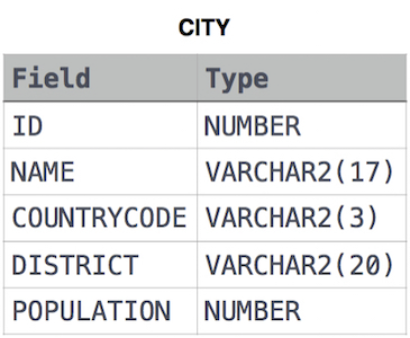
Query the sum of the populations for all Japanese cities in CITY. The COUNTRYCODE for Japan is JPN.
-- 내 문제 풀이(정답)
SELECT SUM(POPULATION)
FROM CITY
WHERE COUNTRYCODE = 'JPN'
02. Weather Observation Station 2
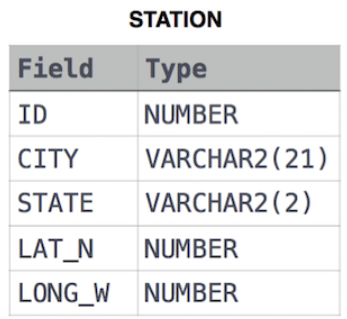
Query the following two values from the STATION table:
- The sum of all values in LAT_N rounded to a scale of decimal places.
- The sum of all values in LONG_W rounded to a scale of decimal places.
-- 내 문제 풀이(정답)
SELECT ROUND(SUM(LAT_N),2) AS lat
, ROUND(SUM(LONG_W),2) AS lon
FROM STATION
03. Weather Observation Station 18
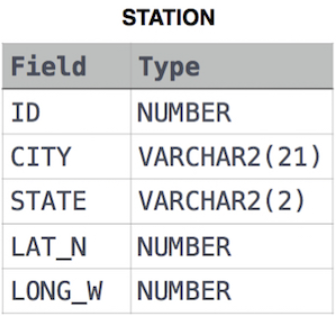
Consider P1(a,b) and P2(c,d) to be two points on a 2D plane.
- a happens to equal the minimum value in Northern Latitude (LAT_N in STATION).
- b happens to equal the minimum value in Western Longitude (LONG_W in STATION).
- c happens to equal the maximum value in Northern Latitude (LAT_N in STATION).
- d happens to equal the maximum value in Western Longitude (LONG_W in STATION).
Query the Manhattan Distance between points P1 and P2 and round it to a scale 4 of decimal places.
- 맨해튼 거리?
(P1,P2), (Q1,Q2) 사이이면 P1-Q1 + P2-Q2
-- 내 문제 풀이(정답)
SELECT ROUND(ABS(MIN(LAT_N)-MAX(LAT_N)) + ABS(MIN(LONG_W)-MAX(LONG_W)),4)
FROM STATION
04. New Companies
- 조직도

테이블
- Company
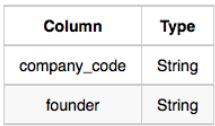
- Lead_Manager
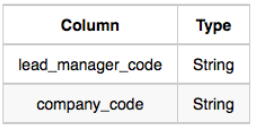
- Senior_Manager
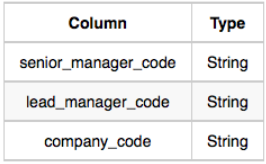
- Manager
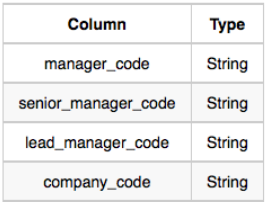
- Employee
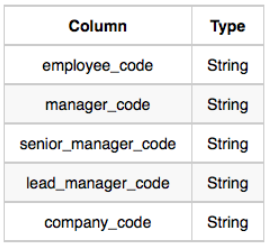
Sample Output
- 회사코드, 창립자명, 리드매니저 수, 시니어 매니저 수, 매니저 수, 직원 수

-- 내 문제 풀이(오답)
-- 만약, 특정한 시니어 매니저가 아래 매니저를 두고 있지 않다면, 오류가 날 수 있다!!
SELECT E.company_code
, C.founder
, count(DISTINCT lead_manager_code)
, count(DISTINCT senior_manager_code)
, count(DISTINCT manager_code)
, count(DISTINCT employee_code)
FROM Employee E LEFT JOIN Company C ON E.company_code = C.company_code
GROUP BY E.company_code, C.founder
ORDER BY C.company.code
-- 만약의 조건도 충족시켜줄 수 있는 정답
SELECT C.company_code
, C.founder
, count(DISTINCT L.lead_manager_code)
, count(DISTINCT S.senior_manager_code)
, count(DISTINCT M.manager_code)
, count(DISTINCT E.employee_code)
FROM Company C LEFT JOIN Lead_Manager L ON C.company_code = L.company_code
LEFT JOIN Senior_manager S ON L.lead_manager_code = S.lead_manager_code
LEFT JOIN Manager M ON S.senior_manager_code = M.senior_manager_code
LEFT JOIN Employee E ON M.manager_code = E.Manager_code
GROUP BY C.company_code, C.founder
ORDER BY C.company.code
